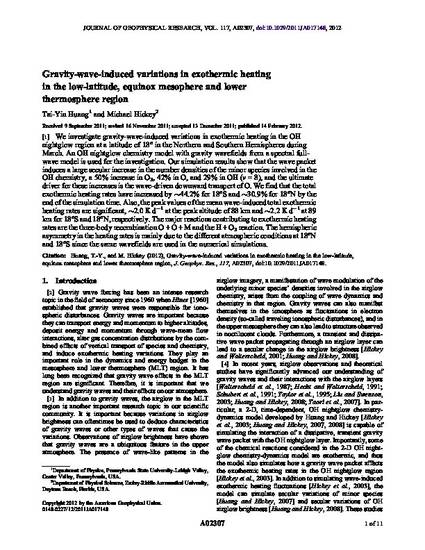
We investigate gravity-wave-induced variations in exothermic heating in the OH nightglow region at a latitude of 18° in the Northern and Southern Hemispheres during March. An OH nightglow chemistry model with gravity wavefields from a spectral full-wave model is used for the investigation. Our simulation results show that the wave packet induces a large secular increase in the number densities of the minor species involved in the OH chemistry, a 50% increase in O3, 42% in O, and 29% in OH (v= 8), and the ultimate driver for these increases is the wave-driven downward transport of O. We find that the total exothermic heating rates have increased by ~44.2% for 18°S and ~30.9% for 18°N by the end of the simulation time. Also, the peak values of the mean wave-induced total exothermic heating rates are significant, ~2.0 K d¯¹ at the peak altitude of 88 km and ~2.2 K d¯¹ at 89 km for 18°S and 18°N, respectively. The major reactions contributing to exothermic heating rates are the three-body recombination O + O + M and the H + O3 reaction. The hemispheric asymmetry in the heating rates is mainly due to the different atmospheric conditions at 18°N and 18°S since the same wavefields are used in the numerical simulations.
